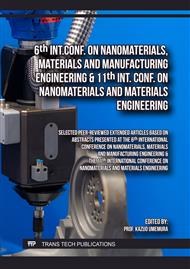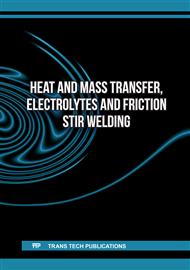p.3
p.9
p.15
p.21
p.29
p.35
p.45
p.55
Development of Numerical Model for the Rotary Friction Welding Process Using Aluminum Alloy
Abstract:
ABAQUS is a powerful software for simulating nonlinear material models with complex thermo-mechanical behavior. Its robust capabilities make it particularly suitable for simulating the Rotary Friction Welding (RFW) process. In this study, ABAQUS was utilized to simulate the RFW process of AA6061 aluminum alloy, focusing on key aspects such as weld morphology, temperature distribution, and axial shortening. The simulation results were analyzed and validated against theoretical foundations of the RFW process and previous research, demonstrating the model's high reliability. These findings highlight the potential for further development of the simulation model for various applications, aimed at enhancing the efficiency and effectiveness of RFW in industrial applications.
Info:
Periodical:
Pages:
3-8
Citation:
Online since:
May 2025
Authors:
Price:
Сopyright:
© 2025 Trans Tech Publications Ltd. All Rights Reserved
Share:
Citation:



